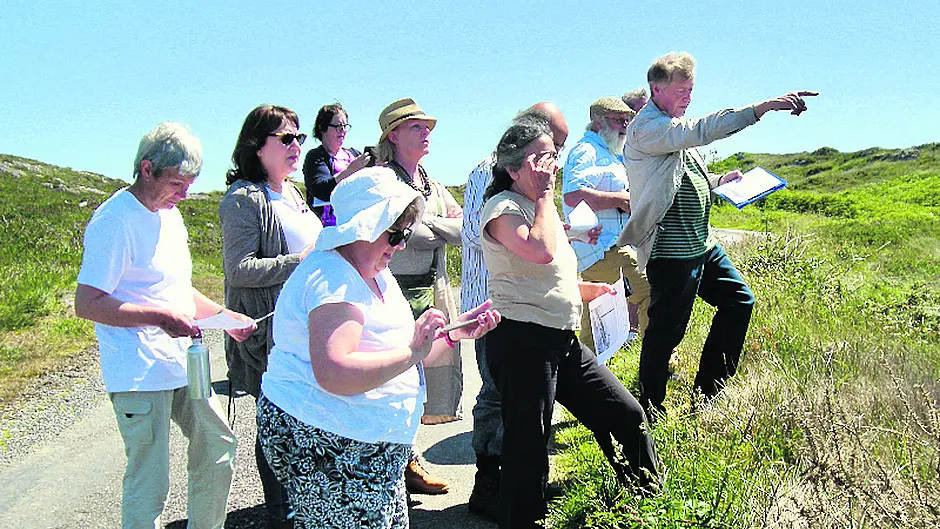On a guided tour to explore Cornish links with West Cork, Brian Moore learned of several things the areas and their peoples have in common
On a guided tour to explore Cornish
links with West Cork, Brian Moore
learned of several things the areas
and their peoples have in common
WEST Cork gave Cornwall its patron saint and saved its national bird.
The links between both places run deep.
When the Cornish men came here to dig deep into the rocky coastline looking for copper across the West Cork peninsulas back in the 1800s, they left behind them a legacy of dangerous work and a landscape of mine shafts, engine houses, mine captains houses, and a little village nestled high above Bantry Bay.
But that’s not all.
For example, did you know that we have Cornish men to thank for the lighthouse on Fastnet rock? Back in the 1870s a Cornish company won the tender to build the light house and the rock used was quarried and assembled, just like a huge jigsaw puzzle, in Plymouth and then transported to Crookhaven before being moved, by a specially commissioned boat, to the Fastnet Rock?
These and other Cornish facts were pointed out to our group as we joined Robert Harris for his ‘West meets West’ Cork-Cornwall connections day-long guided tour, an event organised by the Uillinn West Cork Art Centre to tie in with an art exhibition there by three noted Cornish artists.
‘The connections between Cornwall and West Cork go back hundreds of years,’ said Robert who lived and worked in Newlyn, Cornwall for over 30 years.
Our first stop, after a short trip from Skibbereen, was to the mouth of the Roaring Water River to see how important access to the sea was to the Cornish mining companies.
From there it was on to see the Cornish Mine Captains’ houses in Cappaghglass, medieval fishing quays and a fish palace in Rosbrin and then to copper mine sites and vantage points taking in Mount Gabriel, Cape Clear Island and Roaringwater Bay.
‘The Cornish men brought work to many of these remote areas on the peninsulas, which was much needed, especially during the famine times,’ Robert said.
‘However, as you will see from some of the sites, especially on the north side of the Sheep’s Head, this was very dangerous work. Work that was often carried out by women and children.’
In fact, the sheer height of the cliffs, with the waves crashing on jagged rocks far below and the steep uneven pathways leading down to the makeshift quays where the boats were loaded with the copper ore, left us all in awe at the thoughts of women and young children carrying this ore in baskets on their backs to the waiting boats.
‘But we mustn’t forget all that West Cork has given Cornwall down through the centuries,’ Robert told us as we stopped for lunch in Kilcrohane. ‘For example, did you know that Cornwall’s patron saint, St Piran, was born on Cape Clear? It’s the story of St Patrick in reverse.’
Or the story of Cornwall’s favourite bird the ‘Chough’?
‘The Chough is Cornwall’s national bird, and has been on the county’s coat of arms for centuries,’ Robert said. ‘But for many years the bird was very scarce and had all but died out. After a campaign to reintroduce the Chough failed and little hope was seen for the survival of the red-legged bird in Cornwall, scientists began to notice an increase in the numbers of birds along the coastline. When they examined the new birds they discovered that their DNA matched Chough colonies from West Cork.’
So, West Cork gave Cornwall its patron saint and saved its national bird.
Today, more connections between the two regions are being forged with an exhibition of works by Cornish artists at the Uillinn in Skibbereen. ‘West meets West’ is a long-term project which will see work travelling across the Celtic Sea, hopefully on an annual basis. This year’s exhibition in Uillinn showcases three artists, Matthew Lanyon, Philip Booth and Tony Lattimer from Cornwall.









